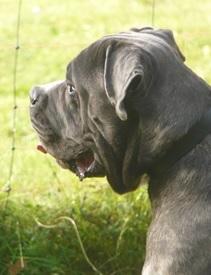Background & Aims

Dogs are considered to be the oldest domesticated animals. Since the onset of the dog’s domestication about 14,000 years age more than 400 breeds have arisen owing to a long process of breeding and selection for looks and behaviour with intent to create the 'perfect dog' for its respective field of application. These breeds show, besides morphological and physiological differences, notable differences in their personality which refers to behavioural responses that differ between, but are consistent within individuals over time and situation.
According to similarities in morphology and their functional background breeds are summarized in different breed groups. However, it is controversial if breeds which belong to the same breed group show behavioural similarity even today. Less is known about the historical function of most modern breeds implying that currently recognized breed groups were set up primarily based on anecdotal information. Moreover, it can be observed a shift in selection pressure over time. Whereas the ancient selection was focused on creating breeds with specialized working abilities, with the emergence of kennel clubs and dog shows in the 20th century the selection for appearance gained in importance. Today the main purpose of breeding is the selection of dogs for companionship with humans. Since recent selection criteria were shown to have a high impact on the shaping of the behaviour of dog breeds, breed-typical behaviour may have changed over time.
Considering the significant heritability which was shown for a variety of personality traits, describing and evaluating behaviour in dogs provide great benefits, for example with regard to genetic research . Owing to striking behavioural differences and their unique population history, breeds of dogs serve as valuable resource for identifying the genetic components of behavioural traits.
The reasoning for this project was the need to detect and describe striking behavioural differences between dog breeds for the purpose of later genetic analyses. Owing to the wide range of different approaches to investigate the behaviour of dogs, the project should also give an idea of good behavioural tests. Therefore, the aims of this study were
- to compare different breeds of dogs with regard to their behavioural responses in the BPH with the goal to find breeds with consistent, large differences in specific test aspects,
- to identify and characterize clusters of breeds which show similar behavioural patterns,
- to verify and specify the found differences by direct ethological analyses of the dog’s body language during the test and
- to validate the BPH by identifying similarities and differences between the two used types of measurement, behavioural rating and behavioural coding.
Responsible for this page:
Director of undergraduate studies Biology
Last updated:
06/02/14
